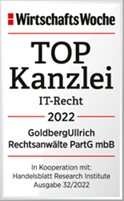On 8 March 2013, the Federal Patent Court decided to refer a number of fundamental questions to the European Court of Justice for a preliminary ruling in two proceedings concerning the colour mark "red" of the German Savings Banks and Giro Association.
The colour red (HKS 13) has been registered as a trademark for the Sparkassen since 2007. According to their own statement, the Savings Banks have been using this colour as a uniform corporate colour since the 1960s and 1970s, among other things for their passbook. The Savings Banks Association has used the registered trademark to take action against several other banks that have also used the colour red. Trademark infringement proceedings are currently pending before the Hamburg Higher Regional Court.
For their part, two competing banks, namely Santander and Oberbank, have applied to the German Patent and Trademark Office to cancel the colour mark of the savings banks. Both banks also claim to have used the colour red as their corporate colour for a considerable time. Unlike the savings banks, however, they have not been present on the German market for long. However, they invoke their freedom of establishment and an unreasonable restriction of access to the German market. The savings banks, on the other hand, point to the protection of legitimate expectations they enjoy due to the trade mark registration. The German Patent and Trade Mark Office rejected the cancellation. Due to appeals against these decisions, the proceedings are now pending before the Federal Patent Court.
According to the Federal Patent Court, the decision on the cancellation requests depends on fundamental questions on which - since trade mark law is harmonised throughout Europe due to a directive - the European Court of Justice must decide in advance. Therefore, it submits some questions to the European Court of Justice.
The issue is whether a sufficiently large majority of consumers understands the colour red as a sign of the savings banks even if it is used alone, i.e. without supplementary signs or references to the savings banks, in advertising for financial services. The European Court of Justice is to decide how large the proportion of consumers must be who understand the colour as a sign of a particular company and to what extent the interest of other banks in the free use of the colour is to be taken into account. In addition, the Court is asked whether the date of the application for registration of the trade mark (here: 2002) or the date of registration of the trade mark (here: 2007) is relevant for the assessment. Furthermore, to whose detriment it is if the consumer's view at that time can no longer be elucidated.
(Proceedings 33 W (pat) 103/09 and 33 W (pat) 33/12 of the Federal Patent Court)
Source: Press release of the Federal Patent Court
Attorney at Law Michael Ullrich, LL.M. (Information Law)
Specialist lawyer for information technology law
E-mail: info@goldberg.de


